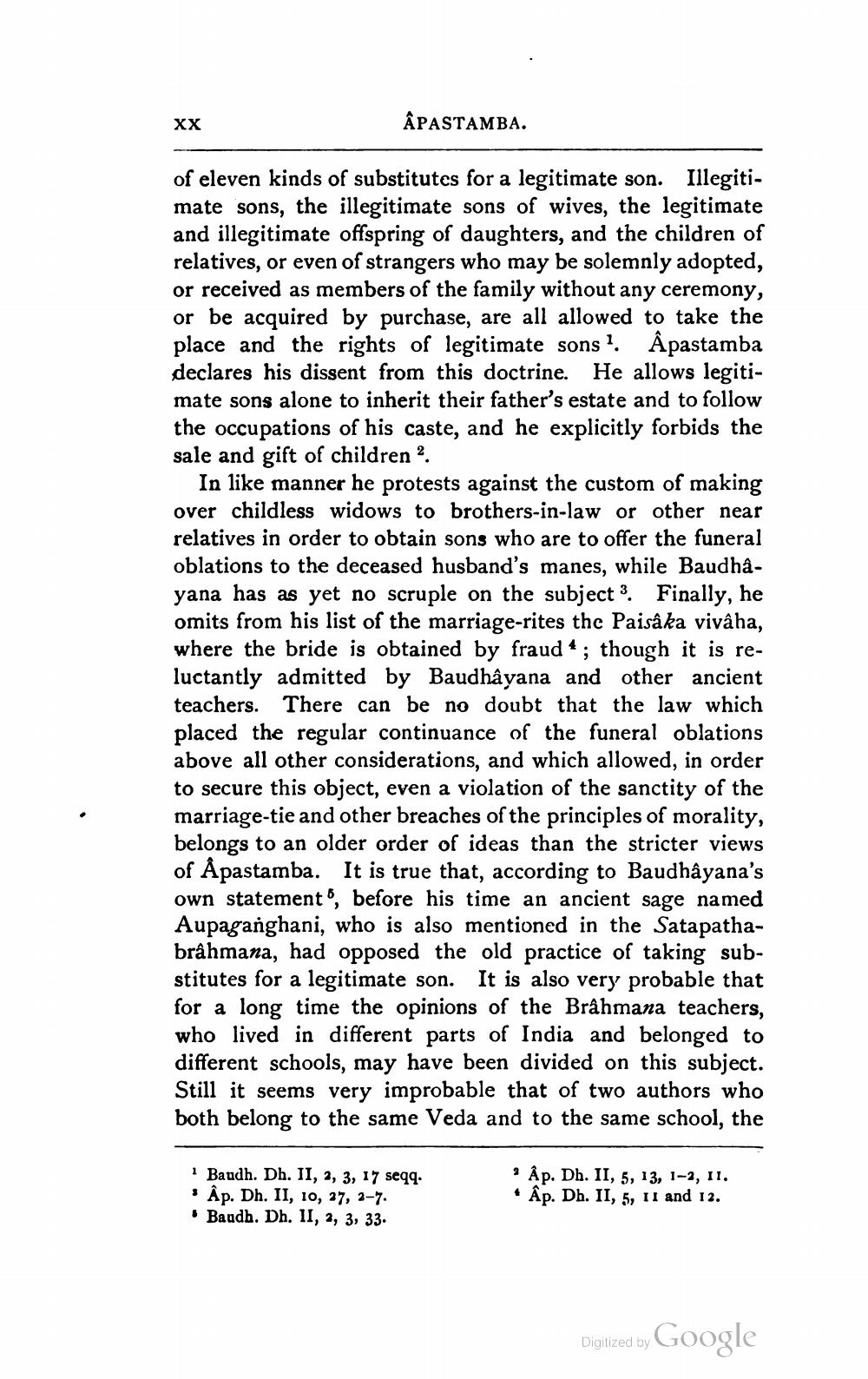________________
xx
ÂPASTAMBA.
of eleven kinds of substitutes for a legitimate son. Illegitimate sons, the illegitimate sons of wives, the legitimate and illegitimate offspring of daughters, and the children of relatives, or even of strangers who may be solemnly adopted, or received as members of the family without any ceremony, or be acquired by purchase, are all allowed to take the place and the rights of legitimate sons? Âpastamba declares his dissent from this doctrine. He allows legitimate sons alone to inherit their father's estate and to follow the occupations of his caste, and he explicitly forbids the sale and gift of children 2.
In like manner he protests against the custom of making over childless widows to brothers-in-law or other near relatives in order to obtain sons who are to offer the funeral oblations to the deceased husband's manes, while Baudhayana has as yet no scruple on the subject ?. Finally, he omits from his list of the marriage-rites the Paisâka vivâha, where the bride is obtained by fraud 4 ; though it is reluctantly admitted by Baudhâyana and other ancient teachers. There can be no doubt that the law which placed the regular continuance of the funeral oblations above all other considerations, and which allowed, in order to secure this object, even a violation of the sanctity of the marriage-tie and other breaches of the principles of morality, belongs to an older order of ideas than the stricter views of Åpastamba. It is true that, according to Baudhayana's own statement', before his time an ancient sage named Aupaganghani, who is also mentioned in the Satapathabrahmana, had opposed the old practice of taking substitutes for a legitimate son. It is also very probable that for a long time the opinions of the Brâhmana teachers, who lived in different parts of India and belonged to different schools, may have been divided on this subject. Still it seems very improbable that of two authors who both belong to the same Veda and to the same school, the
1 Baudh. Dh. II, 2, 3, 17 seqq. • Åp. Dh. II, 10, 27, 3-7. · Baudh. Dh. II, 2, 3, 33.
* Åp. Dh. II, 5, 13, 1-3, 11. * Âp. Dh. II, 5, 11 and 12.
Digitized by Google




